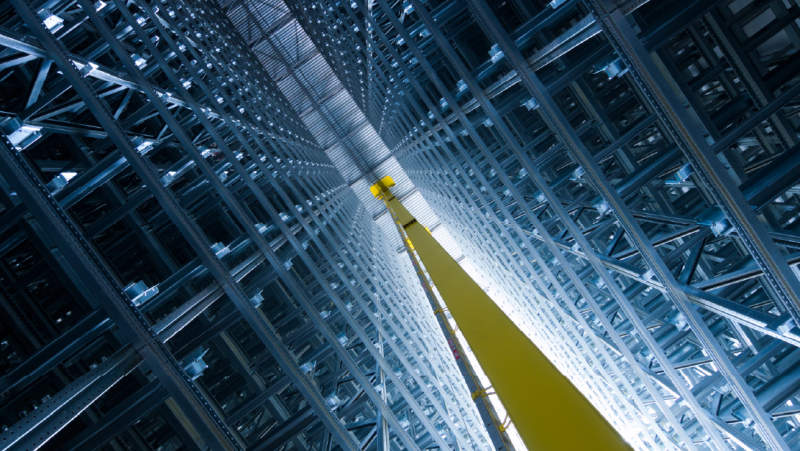Automation: only a scalable concept will ensure companies a place in the market in ten years' time
- Automation
- Article
Automation has been penetrating logistics for many years. Automation technologies often include a barcode scanner, a device that is several decades old. It is therefore not surprising that the intentions and expectations associated with automation have evolved over time. These and other topics were discussed by Jindřich Kadeřávek, Managing Director and executive officer at Element Logic, Libor Mihalka, Managing Director at LogTech, David Strnad, Head of Logistics at ŠKODA AUTO, Jan Linhart, Senior Project Manager at Alza.cz and Rostislav Schwob, Supply Chain Solutions Director at Aimtec.
"The view of automation is changing fundamentally. The main goal is to save as much physical movement as possible. They stand still and technology takes care of the movement for them. 15 years ago, an ordinary picker walked 15 kilometres a day around the warehouse, today machines do the work for him and in time even the picker on the spot may be replaced by a robotic arm," he thinks Henry Kadeřávek from Element Logic. In order for automation to make sense, its basic parameter should be a certain versatility, which will allow companies to adapt their business to current needs.
The entire logistics process can be automated, from the receipt of goods into the warehouse to the final dispatch. Thus, any link in this chain can be automated. Then we can talk about "full automation", which according to David Strnad should be the ideal state. ŠKODA AUTO's Head of Logistics is pleased that automation has arrived in logistics in full force in recent years.
„Robots and fully automated processes have been used in manufacturing for thirty years now. Over the last five to seven years, there has been a clear trend of building fully automated warehouses, which will continue.“
David Strnad, Head of Brand Logistics, ŠKODA AUTO
Automation of everything vs. space for humans
The participants agreed that almost everything can be automated, but it is not always easy or desirable. "If a company has a hundred suppliers, it can standardise them. But when you have 10,000 of them, automated receipt is very problematic," says Jan Linhart of Alza.
This is an example of an operation where logistics cannot yet do without human hands and human supervision. According to Kadeřávek, man has his place in the warehouse for now and will have it for some time. However, the evolution to date contradicts this. "It's nice to see a client's amazement when you bring them into a fully automated warehouse. They are surprised at how quiet it is there, even though the warehouse is five times more efficient than one full of people running around, where there is a huge rush," Kadeřávek says.
How to automate properly also in terms of further development
Every system is vulnerable. Recent years have fully demonstrated the vulnerability of global supply chains. Therefore, even automated plants should be built to take into account the possibility of material supply disruptions. Rostislav Schwob is of the opinion that automation is necessary so that it is always possible to reconfigure programs and adjust them to new conditions. "I see the key as building a concept that can be continuously developed," he says. This is the only way to ensure that an automation project will still be viable even ten years after implementation.
Alza has also bet on a concept that can be modified and developed. According to Linhart, the company has its own software to manage conveyors and other automated solutions and can make changes to the system as needed. "Boxed solutions" from suppliers with whom Linhart has experience have proved insufficiently flexible and expensive.
Schwob points out that at the beginning of automation projects there must be a thorough consideration of the automation concept. "You need to consider what processes you want to automate, what goods are moving in the warehouses, what is high turnover, what is low turnover, etc. And my experience is that if a project fails, it's because of these trivial things, where the reality doesn't match the plan and the automation is slow and inefficient," says the Aimtec manager.
What to consider before automation
According to Kadeřávek, if a company decides to automate its warehouse or logistics as such, it should first ask itself the questions: how, when, what and why. "It is necessary to have an overview of how the warehouse has been running for the last two years and an idea of what the company will look like in three years time. What kind of material will be there? Aren't we making an acquisition that will bring changes? This is important to know, and only then will the details resulting from the data analysis come into play, for example which items have the highest turnover. It is essential to deal with individual processes, because once you leave one out, a bottleneck is created and the effect of automation will disappear," says Kadeřávek.
As Schwob points out, real-world examples show that a pilot automation project often opens the eyes of company managers, and only then does the company see what could be automated. "At the beginning it's hard to figure out what the effect is," says Schwob. Related to this is the complexity of the return considerations.
Integration of different technologies thanks to intelligent layer
Full automation means that individual technologies work together. Although these are automation technologies, their cooperation is not automatically assured. Speakers agree that the intelligent layer, integration software that links the central ERP system with other sub-systems, is a welcome innovation that was unavailable a few years ago. "The more components you have, the more you need integration, which is an essential element of automation. Whoever is able to offer the most flexible solutions will rule the market," Kadeřávek is convinced.
According to Strnad, ŠKODA AUTO, on the other hand, is striving for an open system with multiple suppliers so that it is not dependent on a single supplier, which could then more easily dictate the terms. "We are currently thinking about a new wave of AGVs and our goal is central management, but with an open system, where we buy from company A once and from company B twice, and there may be, for example, five suppliers."
The future of logistics - the importance of people, tools for easy implementation of change
In the medium term, the panellists foresee an acceleration of the current automation trend. They expect fully autonomous operation of warehouses in ten years. "I see a lot of little self-propelled carts that ensure that you don't have to transport anything from point A to point B. Yet there will be a human somewhere, perhaps equipped with various sensors, and there will be flexible work left over that is not worth automating," Schwob predicts.
Linhart is also counting on humans in the future. He expects faster and better solutions to come, but is not convinced that it will be possible to fully automate everything within ten years.
Libor Mihalka from LogTech reflects on the topic from a business perspective: "I think there will be a consolidation of companies that are implementing automation, and these big companies will push the big solutions, while the smaller ones will deliver solutions like AutoStore or autonomous robots."
Strnad also expects a shift in what can be demanded from automation technology suppliers. "I expect that in the future, suppliers will deliver not only automation, but also tools that will allow customers to simply make the changes themselves ," Strnad concludes.
How should you approach automation at your company?
Discuss your options for launching an automation project, or pick out the right technology.
>> Arrange a non-binding consultation with an Aimtec expert.

Vít Glasl
Share article
Top stories from logistics, production and IT.
Subscribe to Aimtec Insights
By registering, you agree to the processing of your personal data by Aimtec as described in the Privacy policy.
Get top stories and articles
from Logistics, Production and IT.
Subscribe to Aimtec Insights
By registering, you agree to the processing of your personal data by Aimtec as described in the Privacy policy.








